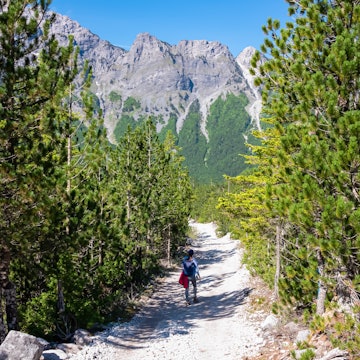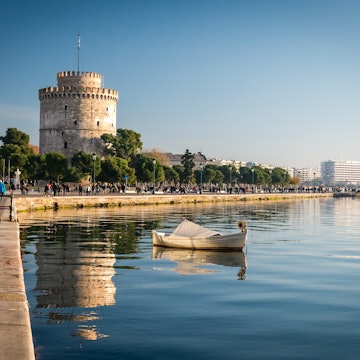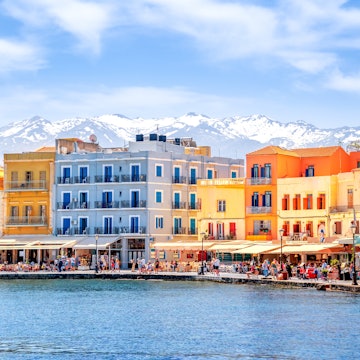

White Tower in Thessaloniki, Greece. Mazur Travel/Shutterstock
Imbued with the freewheeling spirit of a twentysomething and the grace of an all-knowing grandmother, Thessaloniki is both ever-changing and familiarly welcoming.
So, when you mention Thessaloniki to Greeks, it’s no surprise that their eyes glisten with adoration. Greece’s second-biggest city evokes emotions for a multitude of reasons.
Smaller and more compact than Athens, the port town is a much-loved destination among inhabitants of the country’s capital. Situated at the crossroads of East and West, Thessaloniki has a tumultuous history of occupation, by the Romans then the Ottomans, followed by a catastrophic fire in 1917.
Today, simultaneously laidback and lively, this university town’s major draws are its historical sites and museums, easygoing nature, multicultural vibes, buzzing restaurants and bars, and an event-packed calendar.
Here's a guide for first-time visitors to Thessaloniki.
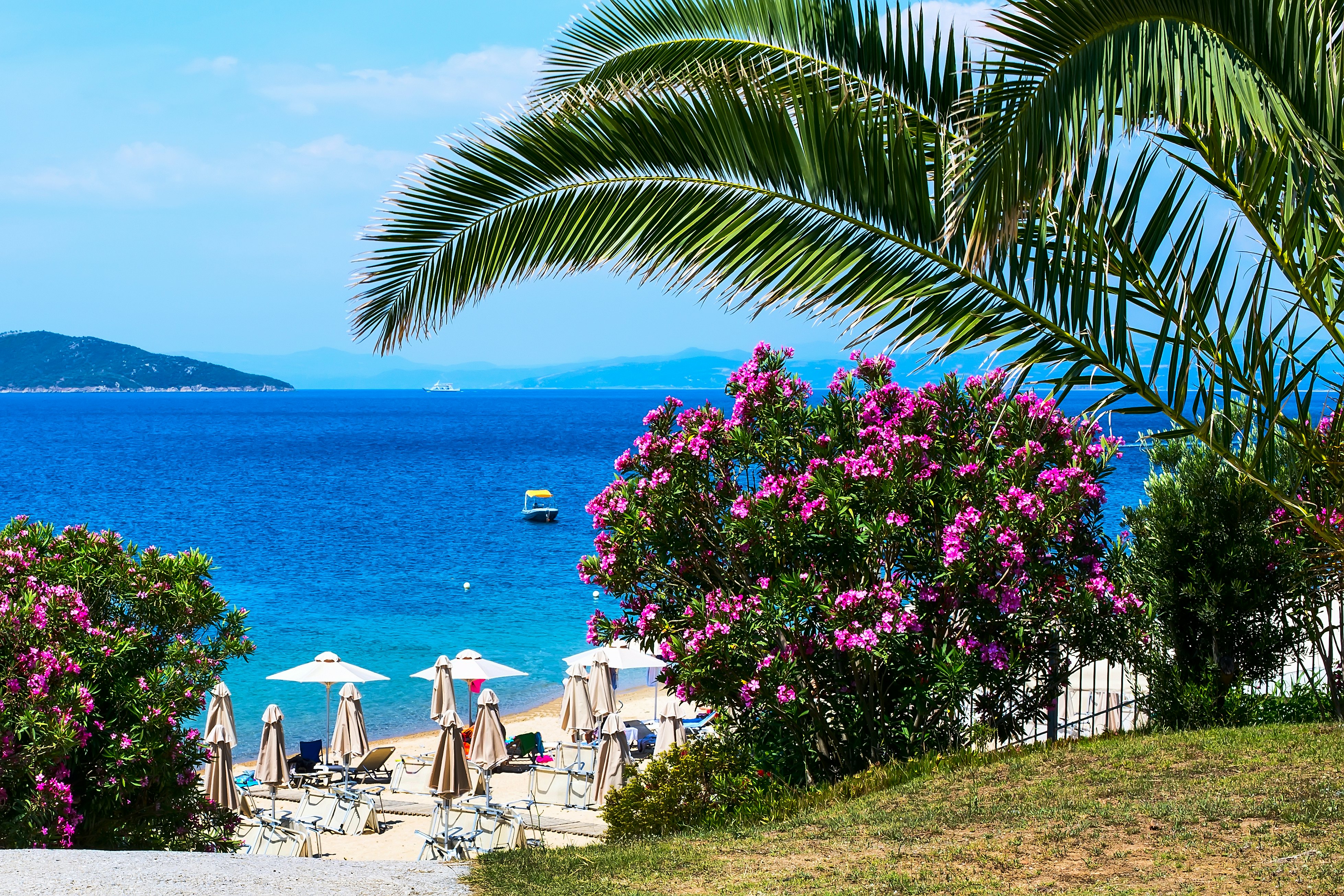
When should I go to Thessaloniki?
Thessaloniki’s temperatures are always a few degrees lower than in Athens, so it might seem like summer is an ideal time to visit. Unless you can’t visit any other time or you’ve booked a beach break in Halkidiki, the three-pronged peninsula south of the city, and want to slot in a Thessaloniki stay, don't visit in summer. Between mid-June and August, it’s hot and humid.
Thessaloniki is at its best between September and December. Fall sees a fresh batch of university students injecting the city with new life. In September and October, the weather is pleasantly warm and sunny, which makes strolling around the many sights comfortable.
Electronic music fans from throughout Europe and beyond congregate in the city in September for the Reworks Festival, with headline artists including Black Coffee, Adriatique and Ellen Allien alongside local DJs. October’s main cultural highlight is the Dimitria Festival, featuring theater, music, short films, dance and art exhibitions at venues such as the Thessaloniki Concert Hall and theaters around town.
November and December might bring some overcast days and a little rain but the city is very much alive. Tens of thousands of cinephiles flock to the highly regarded Thessaloniki International Film Festival in November, but you need to be quick to get tickets. Christmas sees the city in a festive mood, with markets on Dikastirion Square and bands playing outdoors.
Spring is ideal, with good accommodation deals early in the season. Events include the Thessaloniki International Documentary Festival, held in March.
How much time should I spend in Thessaloniki?
Two full days allows you to take in the majority of Thessaloniki’s attractions, including its vibrant neighborhoods, historical sights and cafe culture. Weekends are naturally livelier, with visitors flowing in from Athens and nearby cities. Ideally, book the restaurants you want to check out ahead of time. Scheduling your stay over weekdays allows for more spontaneity and less scrambling for a table at ouzeries, cafes and bars. If you prefer to take your time, which I highly recommend, or want to visit nearby historical sites, such as Vergina and Pella, add a third day.
Is it easy to get in and around Thessaloniki?
Thessaloniki International Airport is well-connected with Europe, receiving non-stop flights from over 35 countries. Traveling from the US requires a stopover in a European city. Public bus line 1X runs between the airport and the city center, taking about 50 minutes to an hour, depending on traffic.
While Thessaloniki has a brand new state-of-the-art subway, a planned connection between the airport and downtown is still a long way off. However, it’s worth checking out the artifacts unearthed during the construction of the Thessaloniki Metro. At Venizelou station, a Roman thoroughfare has been preserved in situ, while antiquities are on display throughout the metro’s 13 stations.
Thessaloniki’s city center is compact and easily navigable on foot. Bicycles are a popular way to move around town, with dedicated bike lanes along the waterfront; they can be rented for affordable rates. Local buses also link landmarks, neighborhoods and the port.
If you need a cab to return to your hotel after a night on the town, stop by one of the numerous taxi stands. You can also order a taxi via the phone app Freenow or Uber. Local cabs are recognizable by their dark blue color.
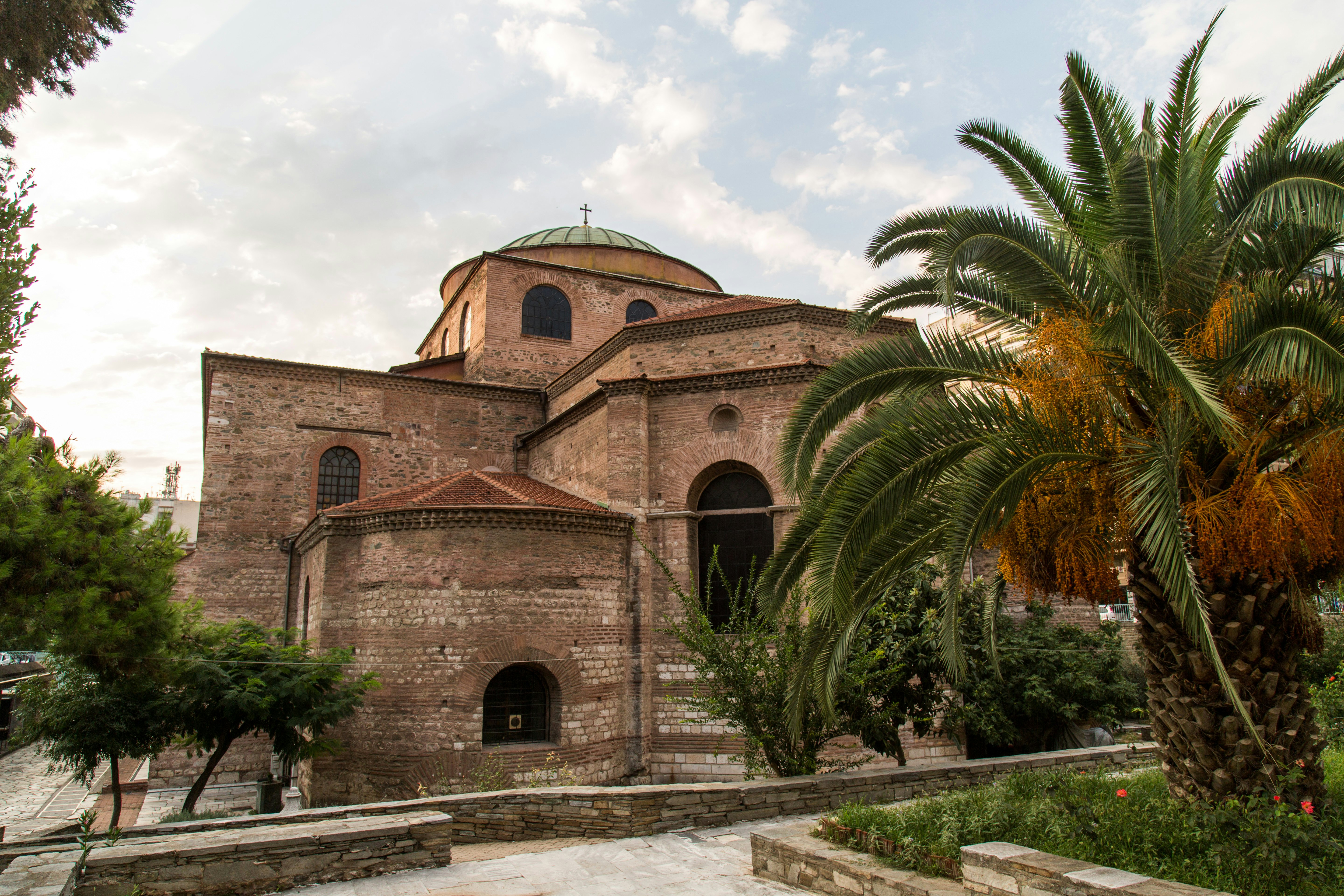
Top things to do in Thessaloniki
Take a history lesson at the White Tower
Built in the 15th century, the White Tower, a major city landmark, has gone by many names over the years and served various purposes. In the 1800s, it was a prison and a site of execution, its walls stained red with blood. In 1883, Sultan Abdul Hamid II ordered the tower to be painted white. Today, the circular six-story structure hosts a permanent exhibition showcasing Thessaloniki’s history. From the top, you can enjoy 360-degree views of the city.
Marvel at the Church of Agia Sofia
Dating to the eighth century, the Church of Agia Sofia was modeled on its grand namesake in Istanbul. Like many of Thessaloniki's churches, the site was an Ottoman mosque for centuries. Its design pairs a domed basilica with a cross-basilica, a style associated with the middle Byzantine period. Byzantine devotional frescoes from the 11th century adorn its walls, while a depiction of the Ascension of Christ in the central dome is sure to impress.
Stroll the waterfront at sunset
As the sun starts to go down over the Thermaic Gulf, join the canoodling couples, university students and families strolling or cycling along the waterfront. Designed by the Nikiforidis-Cuomo architectural team, it stretches around 3.1 miles (5km) from the port to the Thessaloniki Concert Hall, with 13 themed pocket parks tucked in between. Greek artist George Zongolopoulos’ Umbrellas sculpture draws droves of Instagram snappers for good reason. But don’t miss the majestic bronze statue of Alexander the Great, near the Royal Theater of Thessaloniki. Another way to view the waterfront is to board one of the many boats that ply the waters and serve as floating bars, such as the historic wooden ship Arabella.
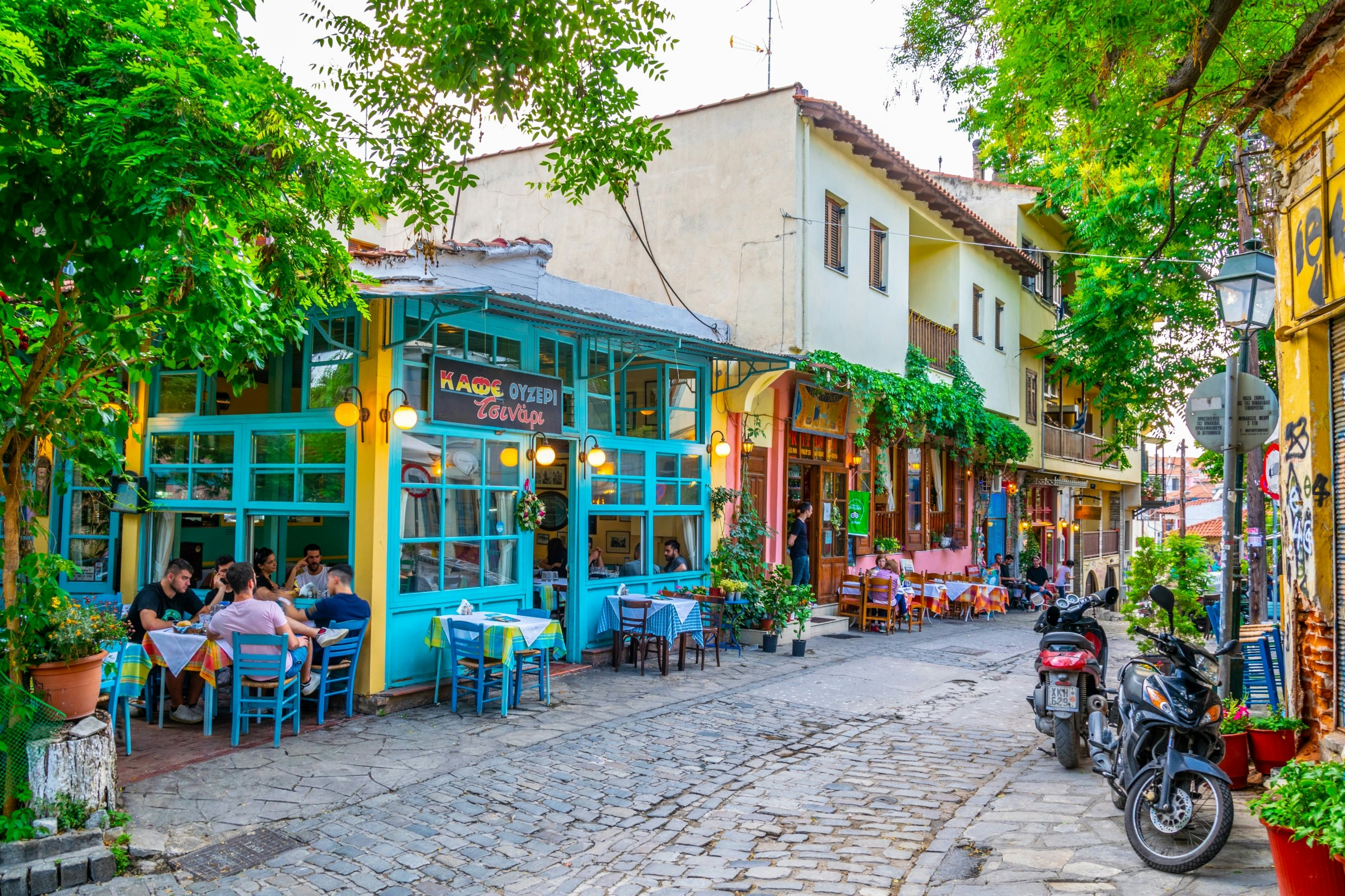
Roam around Ano Poli
Ano Poli (Upper Town) is considered Thessaloniki’s most authentic neighbourhood and has mostly remained unchanged through the years. Within its Byzantine fortifications, you’ll find labyrinthine cobblestoned streets lined with Ottoman-style houses painted in cobalt, mustard and pale apricot. Squares are dotted with cozy cafes and ouzeries (taverns). From the cylindrical 15th-century Trigoniou Tower, take in views of the Thermaic Gulf and, on a clear day, Mount Olympus.
Catch a live hip-hop show
Hip-hop heads should know that Salonicans (city inhabitants) are passionate about the music genre. As a result, Thessaloniki attracts major talent and regularly hosts live shows and open mic nights featuring homegrown talent. In March, the city hosts Hip-Hop International Greece/Cyprus, a high-octane street dance competition that has been taking place since 2010. Crews battle it out for a place in Hip-Hop International, held in Arizona.
Grab a cold one
With the weather still enticingly warm, September calls for a cold one or two. Take your pick from a mind-boggling selection of craft beers produced in Greece and further afield, generously poured at the Thessaloniki Beer Festival. There is also street food aplenty and live bands entertaining students and beer connoisseurs. But if beer doesn’t do it for you, check out the edgy cocktail bars in Ano Ladadika and the Valaoritou district.
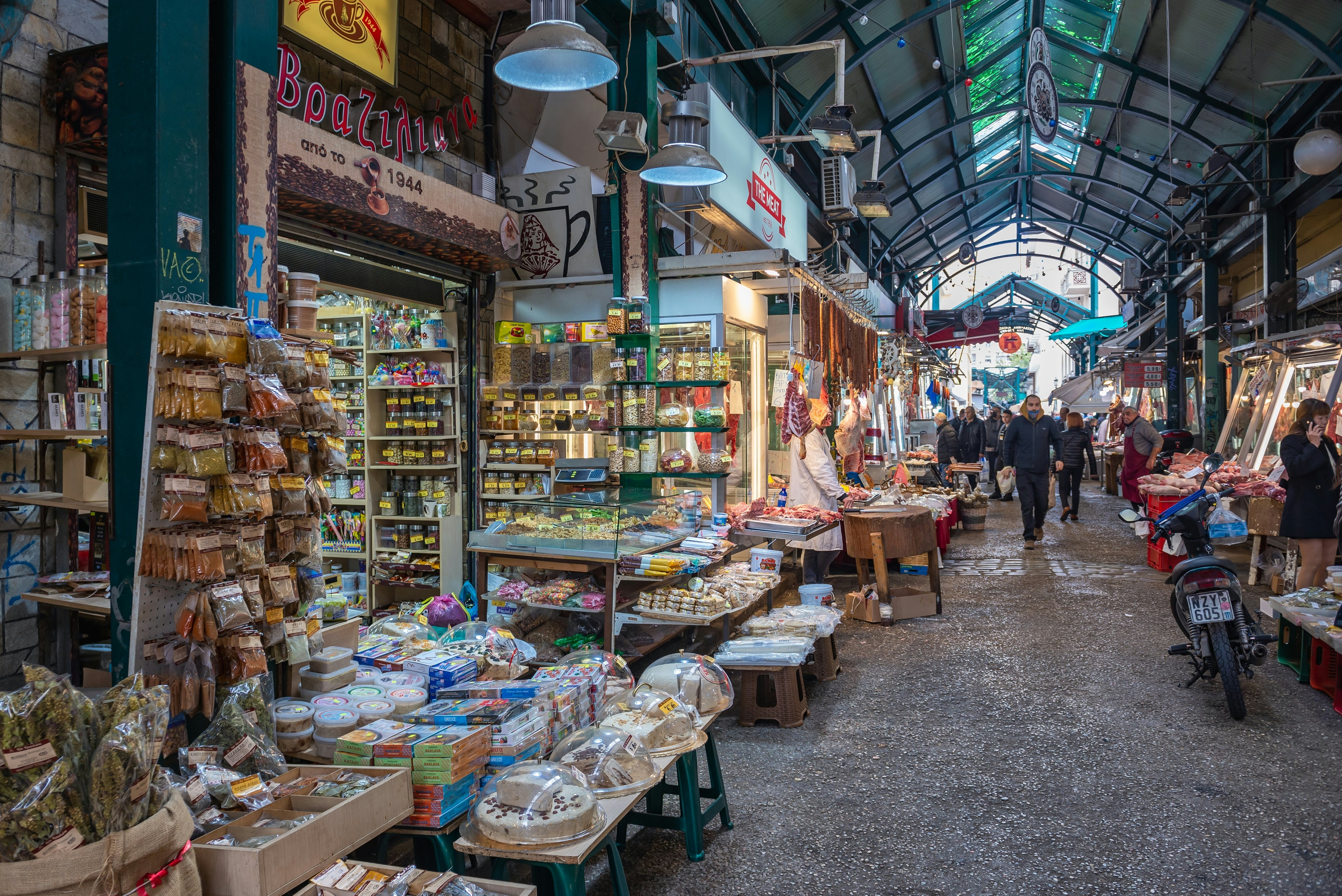
My favorite thing to do in Thessaloniki
There’s nothing I enjoy more than seeking out Thessaloniki’s well-hidden gastronomic treasures. I’ll reserve a full morning for a leisurely walk around Kapani, the city’s oldest open-air market, to chat with stallkeepers. I’ll fill bags with all sorts of goodies like glossy olives, herb-encrusted cold cuts and pungent cheeses. When it’s time for a break, I take a seat alongside locals at one of the old-school ouzeries or kafenia (cafes) tucked into the market for a mid-morning meze. It’s a little too early in the day to sip on fiery spirit tsipouro. Stou Mitsou is a classic spot whose menu has seen a slight modern makeover thanks to its youthful owner. Grilled sardines sourced from the market, atop a lentil salad, is one of my go-to dishes.
How much money do I need for Thessaloniki?
Night at an Airbnb: from €50
Night at a basic hotel: €81
Night at a boutique hotel: €102–121
Bus ticket: €0.60
Coffee: €2.53–4.10
Koulouri: €0.81
Bougatsa: €2.83–3
Dinner at mezedopolio/ouzerie per person (not including drinks): €25
Dinner at upscale restaurant per person (not including drinks): €60
Bottle of Greek craft beer: from €6
Cocktail: from €8.60
What should I eat in Thessaloniki?
Thessaloniki’s culinary heritage is rooted in those who conquered the city through the centuries and the refugees who made it their home. Expect a heady yet soothing melange of Greek, Turkish, Jewish and French flavors, with plenty of aromatic spices and sweet touches.
Salonicans are exacting critics when it comes to food, so it’s hard to have a bad meal in the city, widely considered the country’s culinary capital.
That means you can not only expect top-notch victuals but also sample food trends that kick off there before spreading to Athens and other parts of Greece. Among other things, Thessaloniki excels in street food. Start your day like locals do, with a sesame seed-studded bread ring known as koulouri from a street vendor or bakery, and an espresso freddo (iced espresso). Alternatively, grab a slice of the city staple bougatsa – a phyllo-encrusted pie filled with minced meat and onion, cheese, spinach, or custard cream. Sweet tooths should head to pioneering all-day brunch spot Estrella to sample bougatsan, a calorific marriage between bougatsa and a croissant.
May sees the Thessaloniki Street Food Festival roar into action, with food trucks serving up everything from Levantine cuisine to loukoumades (Greek-style fried doughnuts) and live music.









